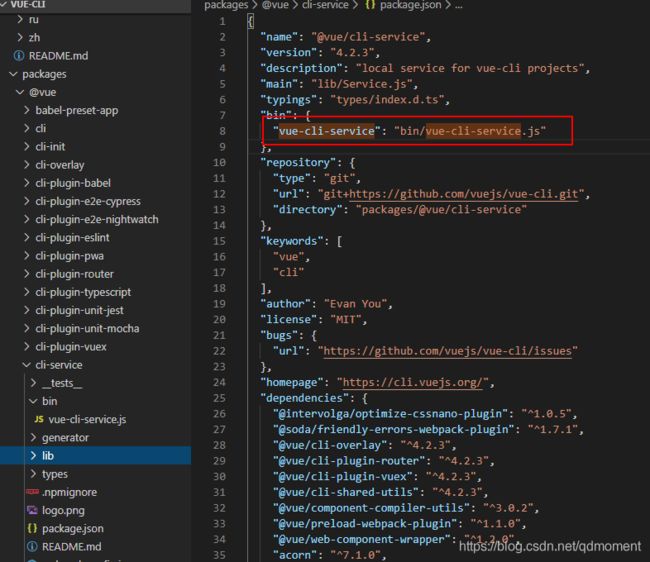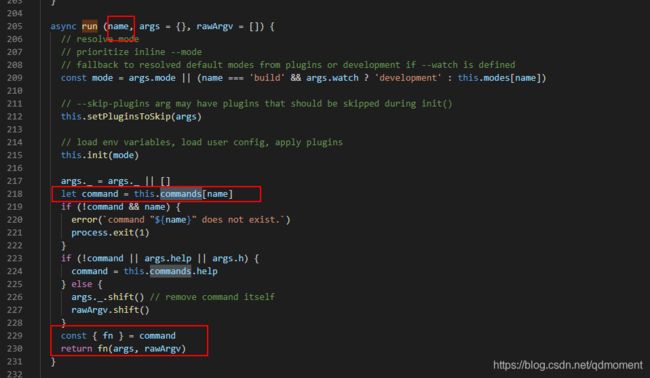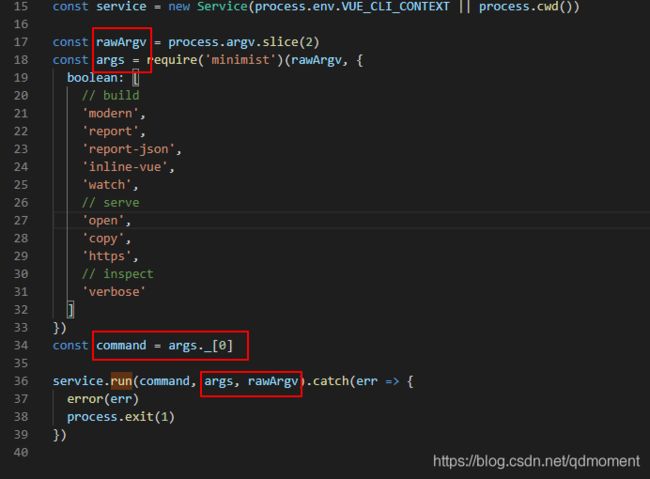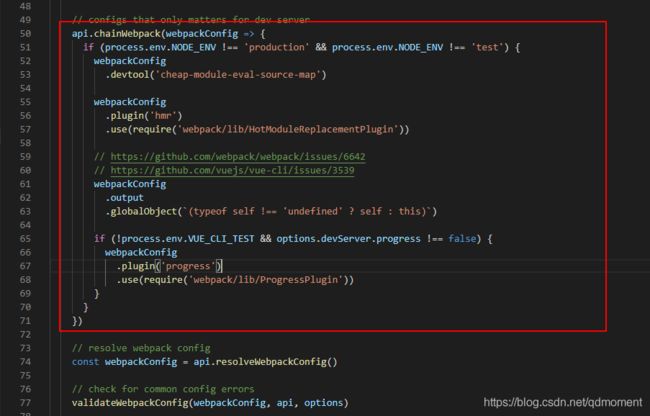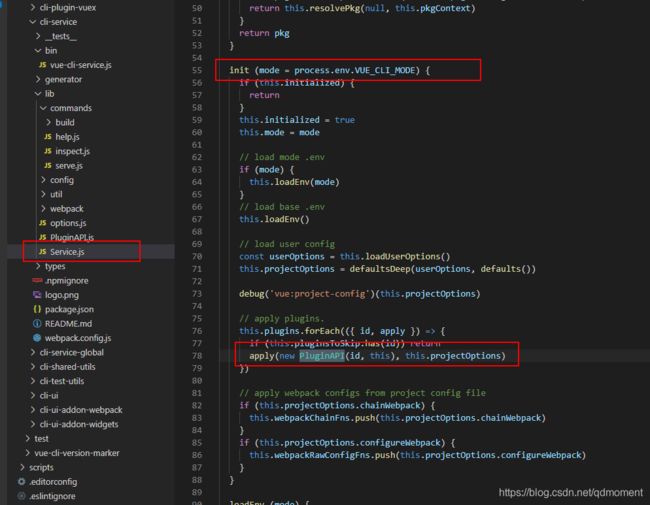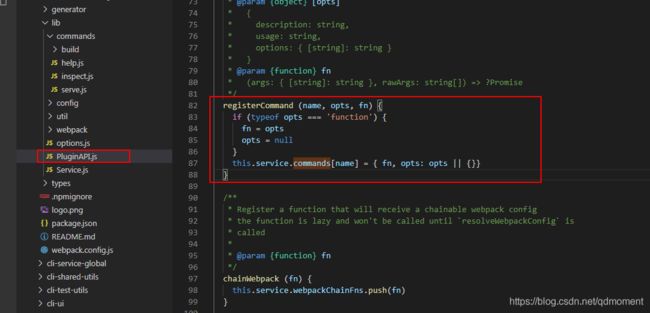vue-cli脚手架 vue和vue-cli-service命令详解
create
vue create 后面有很多参数:
源码如下:
program
.command('create ')
.description('create a new project powered by vue-cli-service')
.option('-p, --preset ', 'Skip prompts and use saved or remote preset')
.option('-d, --default', 'Skip prompts and use default preset')
.option('-i, --inlinePreset ', 'Skip prompts and use inline JSON string as preset')
.option('-m, --packageManager ', 'Use specified npm client when installing dependencies')
.option('-r, --registry ', 'Use specified npm registry when installing dependencies (only for npm)')
.option('-g, --git [message]', 'Force git initialization with initial commit message')
.option('-n, --no-git', 'Skip git initialization')
.option('-f, --force', 'Overwrite target directory if it exists')
.option('--merge', 'Merge target directory if it exists')
.option('-c, --clone', 'Use git clone when fetching remote preset')
.option('-x, --proxy', 'Use specified proxy when creating project')
.option('-b, --bare', 'Scaffold project without beginner instructions')
.option('--skipGetStarted', 'Skip displaying "Get started" instructions')
.action((name, cmd) => {
const options = cleanArgs(cmd)
if (minimist(process.argv.slice(3))._.length > 1) {
console.log(chalk.yellow('\n Info: You provided more than one argument. The first one will be used as the app\'s name, the rest are ignored.'))
}
// --git makes commander to default git to true
if (process.argv.includes('-g') || process.argv.includes('--git')) {
options.forceGit = true
}
require('../lib/create')(name, options)
}) 从上面的代码可以很清楚的看出vue create后面跟的参数
vue create执行过程
vue create ===>
create.js ===>
Creator.js ===>
如果有preset加载preset ===>
OS模块创建系统临时文件夹(os 模块提供了一些基本的系统操作函数)===>
有远程preset,使用download-git-repo下载仓库 ===>
从临时文件夹获取内容写入到实际文件夹(通过fs模块操作)
vue-cli-service
vue-cli-service就像create-react-app的react-scripts, 将项目打包,启动等命令集成到了该命令中,在源码中对应的包是packages/vue/cli-service
如图:
入口文件会指向Service.js
const Service = require('../lib/Service')
const service = new Service(process.env.VUE_CLI_CONTEXT || process.cwd())
const rawArgv = process.argv.slice(2)
const args = require('minimist')(rawArgv, {
boolean: [
// build
'modern',
'report',
'report-json',
'inline-vue',
'watch',
// serve
'open',
'copy',
'https',
// inspect
'verbose'
]
})
const command = args._[0]
service.run(command, args, rawArgv).catch(err => {
error(err)
process.exit(1)
})
Serveice.js
执行constructor()实例化===>
this.pkg = this.resolvePkg(pkg) ===>
this.plugins = this.resolvePlugins(plugins, useBuiltIn)===>
实例 service.run()
resolvePkg(pkg)
通过resolvePkg(pkg)解析package.json, pkg当前命令执行所在的目录
返回值是package.json的路径
resolvePlugins
1,加载commands下的命令文件,并格式化为
[
{
id:'built-in:文件路径',
apply: '命令文件'
}
]2,若dependencies和devDependencies中存在plugins,一并加入到当前plugins数组
判断是否有插件的规则:
id满足下面的正则表达式
/^(@vue\/|vue-|@[\w-]+(\.)?[\w-]+\/vue-)cli-plugin-/id在this.pkg.optionalDependencies中
3,加载本地的plugins
判断是否存在:this.pkg.vuePlugins && this.pkg.vuePlugins.service
格式:
[
{
id: `local:${file}`,
apply: loadModule(`./${file}`, this.pkgContext)
}
]run
在run中根据vue-cli-service参数 获取到对应的命令文件,执行该命令文件的函数
分析serve.js执行过程
webpack配置,通过chainWebpack引入
webpack配置文件
run方法
这里面有一个难点,就是registerCommand在哪里定义,通过分析源码可以得到,在PluginApi中中定义了方法registerCommand()方法,如图:
下面代码中的this.service指向Service实例
到这里执行命令前的逻辑基本完毕,接下来就是执行了。
